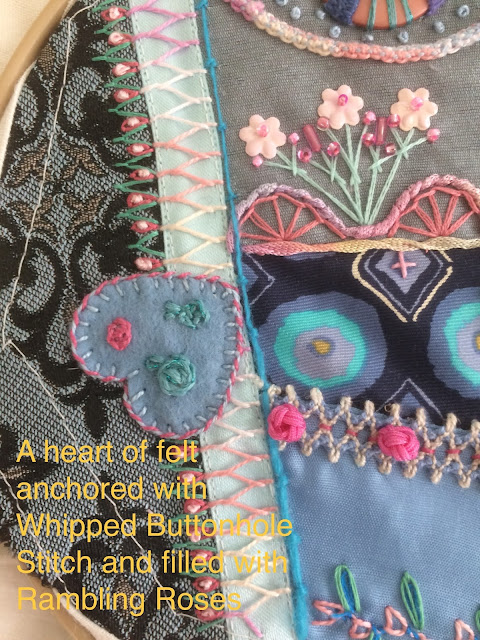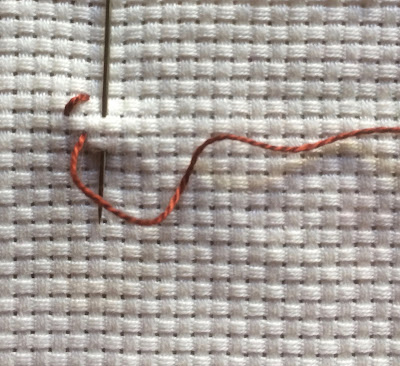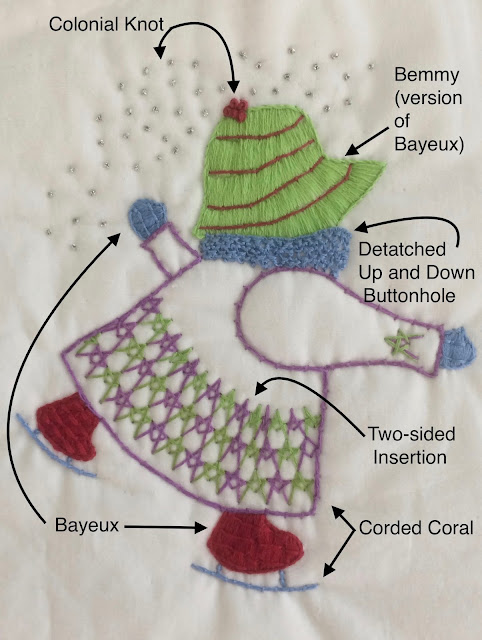It is time for another history lesson at Sunday Stitch School.
We are today looking at one of the most common Needlepoint stitches, the Tent Stitch. It can be found in many stitch dictionaries, but I have referred to 'Elizabethan Stitches, A Guide to Historic English Needlework' by Jacqui Carey.
The Tent Stitch dates back to before the 16th century, and there are many surviving examples.
One important factor with most Elizabethan embroidery is the economy of thread on the back of the fabric.
Tent stitch is an exception, it uses more thread on the back than the front of the fabric, BUT there are several ways to work the stitch, some use more and some less thread. The variations also come with different names.
Traditionally the Tent Stitch was worked diagonally and is then also known as Needlepoint Stitch, Petit Point, Canvas Stitch, Perlen Stitch, Cushion Stitch and Basketweave Stitch.
The latter because of the basketweave pattern it makes on the back of the fabric.
Here is the traditional Tent Stitch worked diagonally:
...........
When worked in horizontal rows, it is known as Continental Stitch or Half Stitch, and uses less thread, but the thread can wrap itself too tightly around the weave, making 'holes' in the weave, so do pay attention not to pull the thread too tightly.
This is how it is done:


When you come to the end of the line you can either,

stitch from down to up, or

turn the work around and, stitch like before, then
turn again when you reach the end of the row.....
Look at this picture of my Aida sampler to see the difference on the back:
The top row of yellow stitches are Half Stitch, and leave a lot of white fabric to be seen.
The rows below show the basketweave pattern, and you can see how much more the fabric is covered.
When Needlepoint is used for a seat of a chair, the Tent Stitch with basketweave back would make a much stronger surface, suitable for the wear and tear of 'upholstery' stitching.
Homework:
Fill in a square on the fake canvas with Tent Stitch (stitched diagonally).


















































